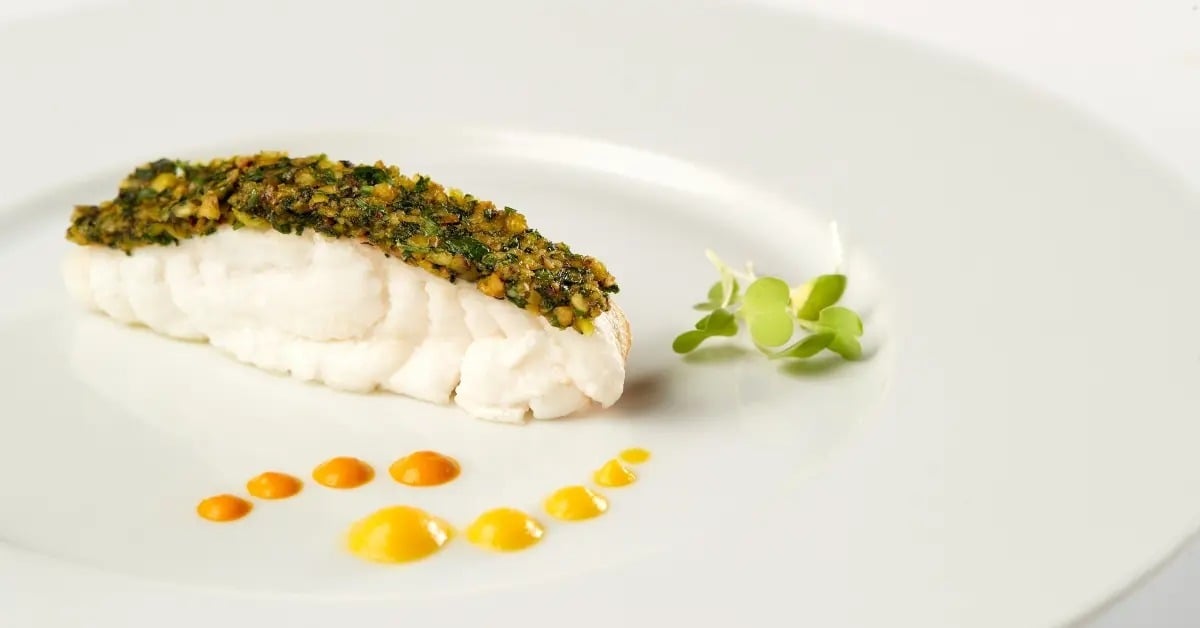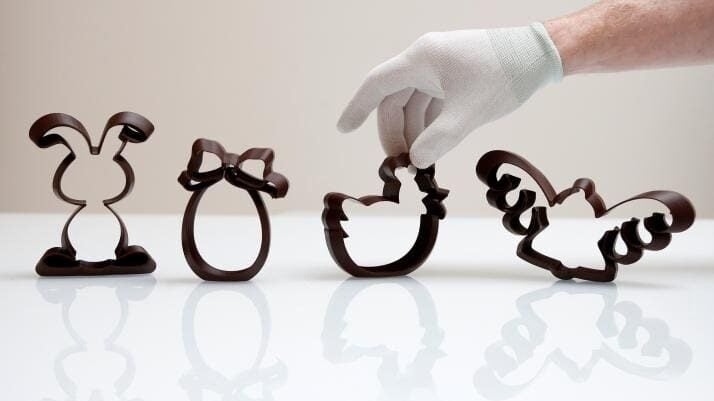Generally speaking, 3D printed food is a meal prepared through an automated additive process. While this definition can be quite abstract (and it is), think of those pizza vending machines that surfaced back in 2015. The dough is prepared, extruded, topped with tomato sauce and cheese, and finally sent to the oven – all within the same machine. This process, in a way, can be considered a primitive 3D printing food process.
Fast forward to 2024 and we have exclusive 3D printing restaurants and dozens of food printers available on the market. This rapid growth in both technology and public interest has led many to claim that, soon enough, every household kitchen will be equipped with its own food 3D printer.
In this article, we’ll explore the 3D printed food industry: the processes, foods, possibilities, and current challenges. Hope you’re hungry!
Which Foods Can Be 3D Printed?
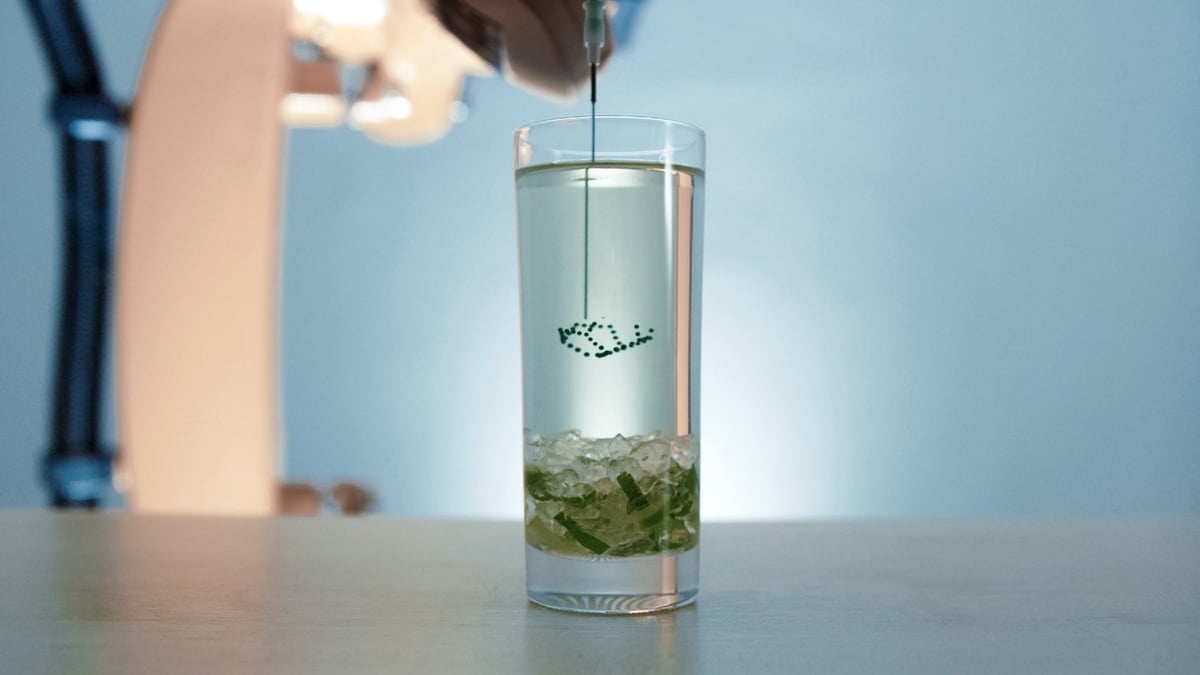
In reality, 3D printed food is still in its infancy and has a long way to go before seeing a broader adoption from professionals and consumers. However, this doesn’t stop us from marveling at these fascinating machines and their intriguing edible designs. It also doesn’t stop entrepreneurs and engineers from experimenting with innovative approaches and equipment.
The foods that can be 3D printed are limited by the processes available (as we’ll see further below). This being said, material extrusion is by far the most common process for 3D printing food and is similar to the concepts used in fused deposition modeling (FDM) 3D printing. This process requires paste-like inputs like purées, mousses, and pasta dough, or meltable foods such as chocolate.
Others have experimented with more diverse printing processes to create very unique foods. One direction of research creates ink from artificially grown vegetable cells to print vegetables. Another company, Print A Drink, prints designs into cocktails by injecting edible droplets into the drink.
Those previous examples all use a very new technology and there is plenty of room for innovation. Like 3D printing plastics, the hardware and materials suitable for working with such systems must be developed side-by-side. Who knows what kinds of food can be printed in only 10 years?
How Does it Work?
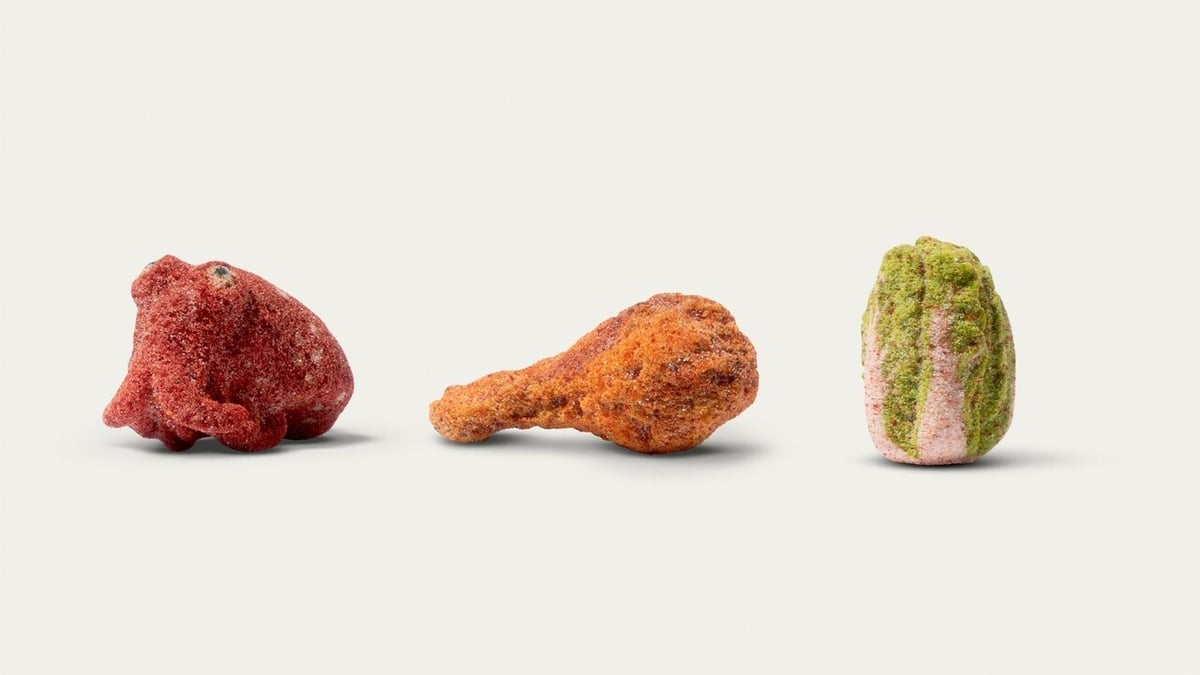
Several 3D printing processes have been successfully used to print food. Many of them follow a similar concept to additive manufacturing techniques for plastic and metals that we are familiar with. Let’s take a closer look at some of the most advanced approaches.
Extrusion
By far the most popular and developed are extrusion systems similar to FDM that involve pushing a viscous material through a nozzle to lay down layer after layer, gradually building a 3D shape. In food printing, this can be done hot in order to melt the material, like chocolate, but it can also be done without heating, as for doughs.
For example, Barilla and BluRhapsody create unique pasta shaped from 3D printed dough that can later be boiled (and then devoured).
Jetting
Binder jetting is a relatively new 3D print process where a liquid binder is meticulously deposited onto a powdered substrate to selectively harden one layer at a time. This process has been recreated for building 3D printed foodstuff from powder, particularly sugar.
The Sugar Lab, employing their Currant 3D printer, uses a water-based binder ink with powdered sugar and other dehydrated food powder to print intricate, full-color sugar cubes, bouillon cubes, drink mixes, and other fun items.
Sintering
The selective laser sintering (SLS) process also serves as inspiration for methods to create 3D printed food. Traditionally in this process, a laser selectively fuses powdered particles together layer by layer. Since a laser is most likely overkill for the purpose of binding food, hot air has been one approach that’s been experimented with to selectively melt and bind edible powder.
Again starting with a bed of powdered sugar, the CandyFab team could create complex geometries of caramelized sugar with their homemade device. Unfortunately, a major limitation of this approach is the material choice, so it’s seen limited development in recent years.
Do Food 3D Printers Cook the Food?
Food 3D printers are mostly suited for architecting intricate shapes and designs, not actually cooking the ingredients. Usually, the edibles are either ready for consumption or will be cooked in an external oven (or grill) once the 3D printing process is finished.
There are some exceptions, of course. The PancakeBot is a machine that only makes pancakes, or rather pancake art, by extruding the batter directly onto a hotplate. It still requires someone to flip it, but everything else is done on the same machine.
What About 3D Printed Meat?
3D printed meat is all about using a fascinating combination of technology and biology. There are several companies out there trying to establish methods (and recipes) for 3D printing meat with authentic texture, nutrition, and taste. Given the complexity of the challenge, it’s more difficult to draw comparisons to traditional 3D printing methods.
Some, like Revo Foods, use a meatless approach, taking advantage of the structural control allowed by 3D printers to mimic the structure of the real thing in plant-based fish filets – the first of its kind to come to market.
Others take an animal-less approach to printed meat, starting with cultivated animal cells that can be deposited, often using a process similar to material-jetting and a 3D printed scaffold, and then incubated into an almost believable piece of meat. Even complex structures, like Japanese Wagyu steak, have been created from 3D bio-printing cell-containing ink. The scientists were able to replicate the specific arrangement of muscle, fat, and blood vessels that give this meat its prized tenderness and flavor.
While these advancements are exciting, 3D printed meat is still in its early stages. However, it has the potential to revolutionize the meat industry, offering a more sustainable and ethical approach to meat consumption.
Where Is It Used?

Today, food 3D printers are mostly used for gourmet dining, be it in molecular kitchens or fancy bakeries. This technology is still not scalable, as it requires more time and development to mature. That doesn’t stop pioneers and innovators from using it, though.
Unfortunately for us, and our wallets, these food innovators tend to be hiding away in fancy Michelin star restaurants. One example is Chef Josiah Citrin’s Citrin and Mélisse restaurants in Santa Monica, California. While not exclusively focusing on 3D printed delicacies, they do produce intricate accents for some of their dishes.
But you may be able to find (slowly) increasing amounts of 3D printed food outside of fine dining. Bakers have made headlines for printing edible wedding cake decorations, and for all you pizza lovers, 3D printed pizzas have been in the works for some time and will surely be a reality sooner rather than later. Revo Foods is the first to make a 3D printed plant-based salmon filet available in certain European grocers.
With all that said, it can be a bit difficult to find 3D printed food in most metropolitan areas. Your best chance would be in 3D printing events or culinary conventions, as this new technology has not achieved much commercial success. Yet.
Pros & Cons
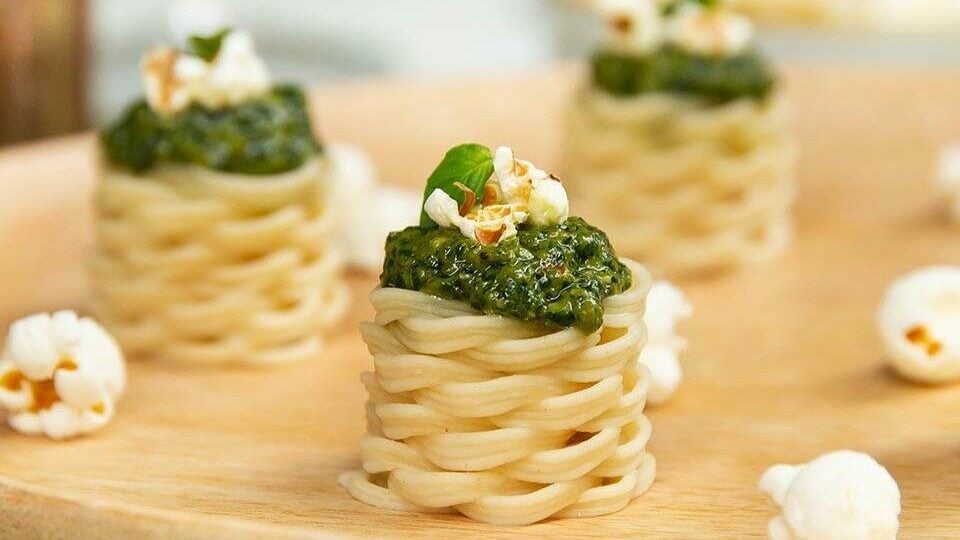
At its simplest, 3D printed food is nothing more than typical edible ingredients processed in such a way that they can be extruded through a nozzle onto a surface. Perhaps the main difference with respect to conventional meals is the final presentation: 3D printing allows the creation of complex, intricate shapes and geometries that are either impossible to reproduce manually or that would require an extraordinary amount of time.
Benefits
It’s completely safe to consume 3D printed foodstuffs as long as they’ve been prepared in an appropriate machine in a clean environment (as with any other kitchen). In addition to creating amazing-looking meals, there are other positives to 3D printing food:
- Personalizing meals: In terms of controlling the diversity and amount of nutrients, vitamins, and calories per meal, 3D printing food allows for precision. This could be extremely important in hospitals where restricted diets are more common, and offers the potential for easy patient customization.
- Unconventional food consumption: When you process nutritious plants and protein-rich insects in a semi-liquid state, these foods could be presented in a more attractive way and thus incentivize their consumption. In the future, even synthetic food might be 3D printed. Who knows!
- Easy reproducibility: Sharing recipes could be as simple as transferring a digital file over the internet. All that would be required are the same raw materials, printing settings, and compatible printing equipment.
Drawbacks
With all these interesting advantages that 3D printing food brings, we’d be remiss not to mention that it does have some downsides.
- Time-consuming: Although times can vary based on the printer and the food, 3D printing of food still takes a lot of time. A very simple 6-layer design can take 7 minutes to print, while more detailed 3D models take more than 45 minutes each.
- High cost: The cost of equipment and consumables also presents barriers, not to mention the time spent on training. Furthermore, the edibles used in these machines typically require some sort of preprocessing, which adds additional costs.
- Limited materials: We’ve gone over the diverse range of printable options, but let’s be real – we can’t be eating pastes and sugar cubes all the time. For now, printed food is largely a novelty.
Consumer Machines
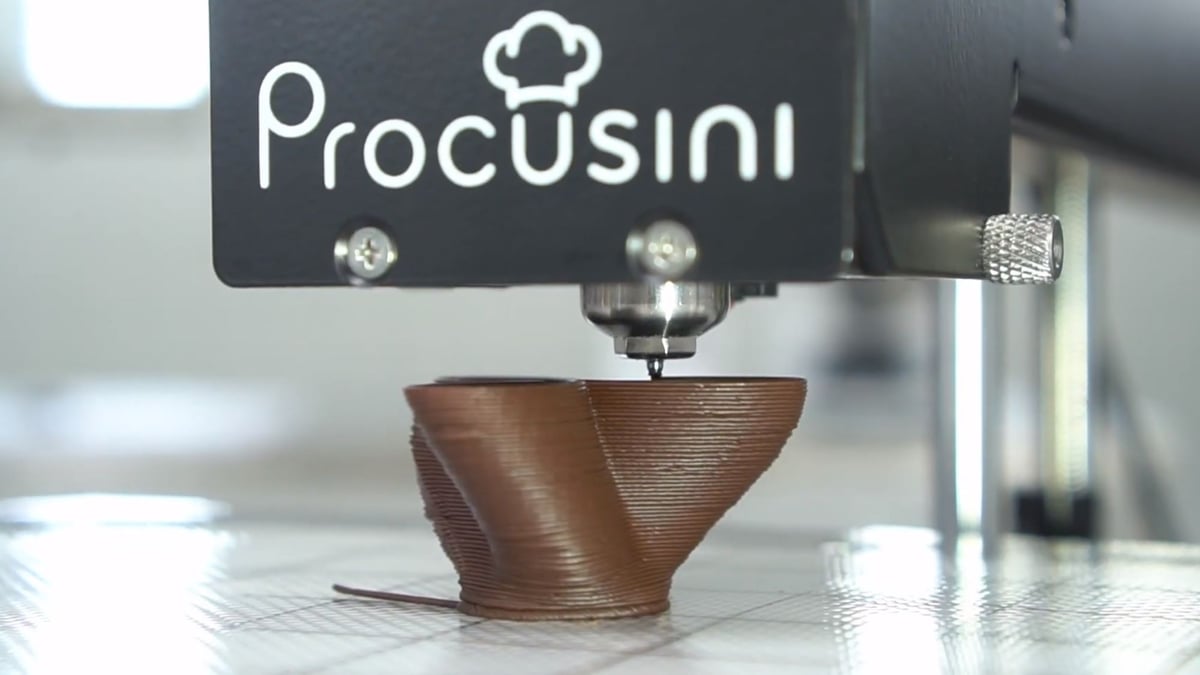
So far, we’ve touched primarily on the headline-inducing foods that are being produced at professional facilities and kitchens. However, there are a few options out there for 3D printed food at home that are more akin to the desktop plastic pushers that we know and love. Let’s take a closer look at the capabilities of consumer-grade devices.
What Ingredients Can Be Used?
The short answer is anything and everything that’s in a paste or semi-liquid state, or can be turned into that type of consistency, could be 3D printed. This includes a wide variety of salty foods like puréed vegetables, batters, doughs, cheeses, and sweets such as jellies, frostings, sugar decorations, chocolate, and mashed fruits.
Most food-oriented printers, such as the Felix, have stainless steel capsules that allow the user to fill them with whatever they wish while providing general guidelines regarding the consistency of food to use.
Other printers like Procusini may additionally offer premade capsule packs that are formulated for printability. However, your options are pretty limited to chocolate. Ultimately, it will come down to a lot of experimenting with what works and what doesn’t.
Design
Most 3D printing food companies have recipe repositories where verified designs can be easily downloaded and reproduced. For example, byFlow’s repository has several fancy artistic models, and Mycusini has its own platform that allows you to create customized text or browse the template library, however you need to purchase the printer before getting access.
Plenty of other food 3D printers come with proprietary software that supports “part” designing. These are usually practical and user-friendly programs that limit the tools required for intricate 3D projects. For the most part, though, that’s all the food 3D printers of today can handle in terms of complexity.
Still, for those wanting to take their food printing to the next level, traditional 3D modeling, like Tinkercad, should work just fine. Just be mindful of the individual processes required by each printer, as you might need to consider special format requirements.
The Future

Companies like Natural Machines see the future of 3D printing food as having faster and more precise operations, as well as producing more texture-rich results.
Printed meat alternatives seem to have the most momentum. As we mentioned, there are plenty of food-tech startups looking to develop their 3D printing techniques to enhance plant-based animal texture, such as Redefine Meat, Nova Meat, and Mycorena in collaboration with Revo Foods. There’s also a big push for 3D printed meat and seafood from cultivated cells (grown in a lab, not by the animal) as a means to reduce the carbon footprint associated with this industry.
3D printed food also has a bright future in space exploration, as NASA and other private companies are already planning missions to Mars. These missions will take between one and three years to complete, so the agency is currently looking into ways to enhance their life aboard the spaceships. It’s no surprise to us, but enhancements include tasty and delicious 3D printed food.
Part of this would be an automated way to produce meals in space, but 3D printing can also add to the looks and diversity of dishes. If you’ve got any of your own ideas, NASA is offering some big bucks to teams with innovative ideas.
Who knows what tasty foods could be 3D printed next?
License: The text of "3D Printed Food: All You Need to Know" by All3DP is licensed under a Creative Commons Attribution 4.0 International License.

